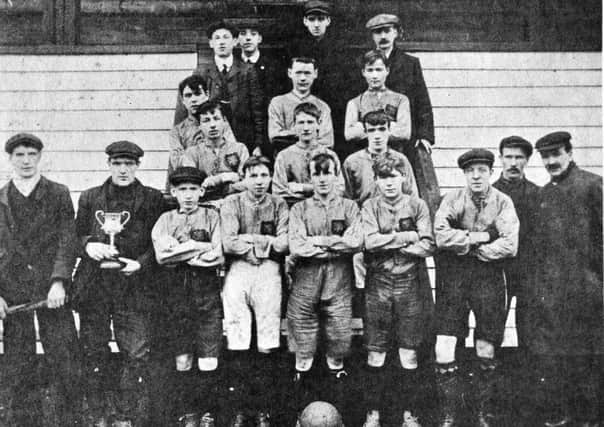Ballymena 1914 - From factory gate to the front line


It has grown remarkably in recent years with new road networks, the Ecos Centre and many housing estates.
Present day Ballymena would have shocked a person of 1914 vintage with its size and obvious wealth.
Advertisement
Hide AdAdvertisement
Hide AdPrior to the First World War, Ballymena had an estimated population of around 14,000 people with a further 19,000 in the rural districts.
That figure is less than half of today’s Borough population and many of the little townlands of 1914 have long since become accepted as part and parcel of ‘the town’.
When one contemplates this enormous growth which took place mostly in the latter half of the 20th century, it makes the toll taken on the area by the seemingly insatiable demands of the first ‘Total War’ all the more poignant.
Imagine a Ballymena where the two vast Ballykeel estates were countryside; a Harryville which ended as a housing area at Casement Street on one side and Queen Street on the other; Ballee was simply farm land with the odd labourer’s or farmer’s house dotted here and there.
Advertisement
Hide AdAdvertisement
Hide AdThe north end of the town had its major centres of population in Alexander Street - now a car park - Springwell Street, Albert Place, Garfield Place and long forgotten clusters of houses in ‘Flag Lane’ and ‘William Street Square’.
In the central part of the town streets like Mill Row vanished under the bulldozer in the 1970s and although Clonavon still stands from that time, huge chunks of Galgorm Street have disappeared and the famous portrait of King Billy was once at the entrance to a collection of tiny terraced streets. There were no private developments at Carniny, Galgorm or Ballymoney Road.
The average Ballymena citizen of 1914 lived in cramped conditions with only the very basic facilities to call on.
Despite the advent of the car, most people journeyed for any distance by rail and most town deliveries were made by the 1914 equivalent of ‘white van man’ in a horse and cart.
Advertisement
Hide AdAdvertisement
Hide AdBut from these little streets where wages were poor and life often short, came hundreds upon hundreds of volunteers for ‘Kitchener’s Army’.
But a great many of them did not look upon the man made famous by the ‘Your Country Needs You’ poster as their natural leader - they had their own charismatic chief in Sir Edward Carson, the Dublin born QC who was absolutely determined to oppose Home Rule by whatever means.
One of the most apparent means at his disposal was his own ‘private army’ - the 80,000 men who were members of the Ulster Volunteers.
In the ranks of the UVF were several thousand men who had served with the British army and who had trained the volunteers in basic martial skills which made them a prime target for ‘Kitchener of Khartoum.’